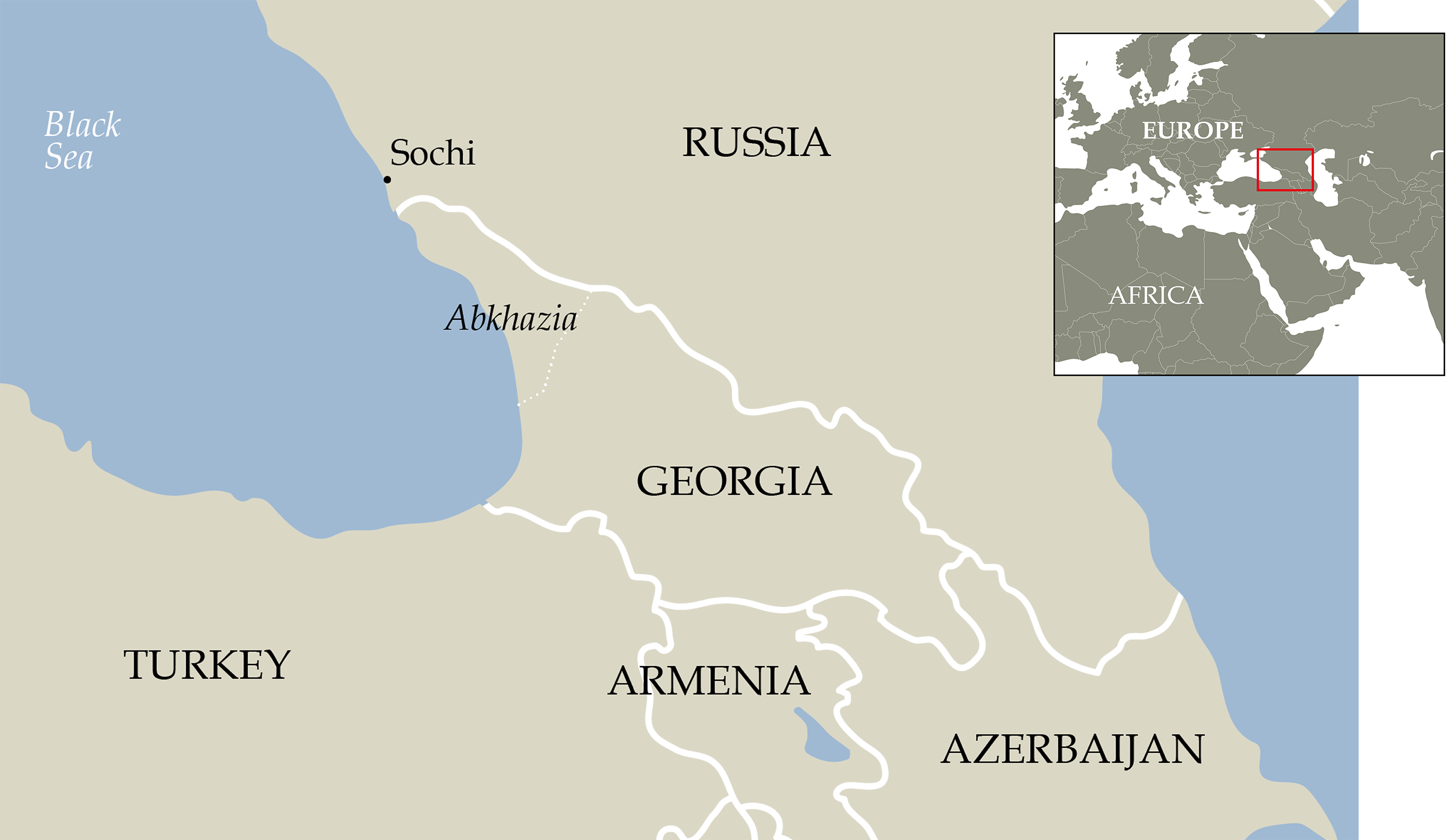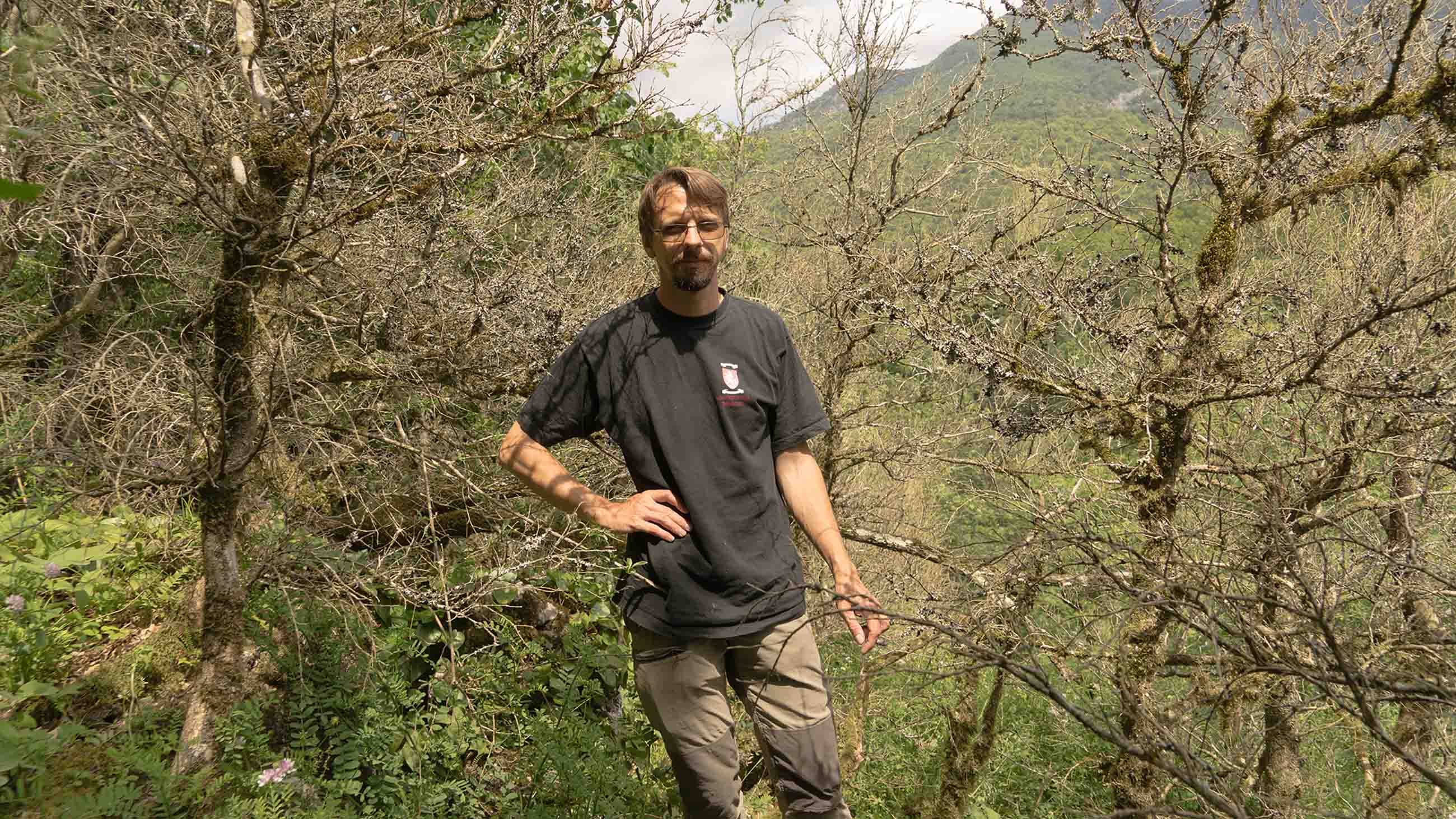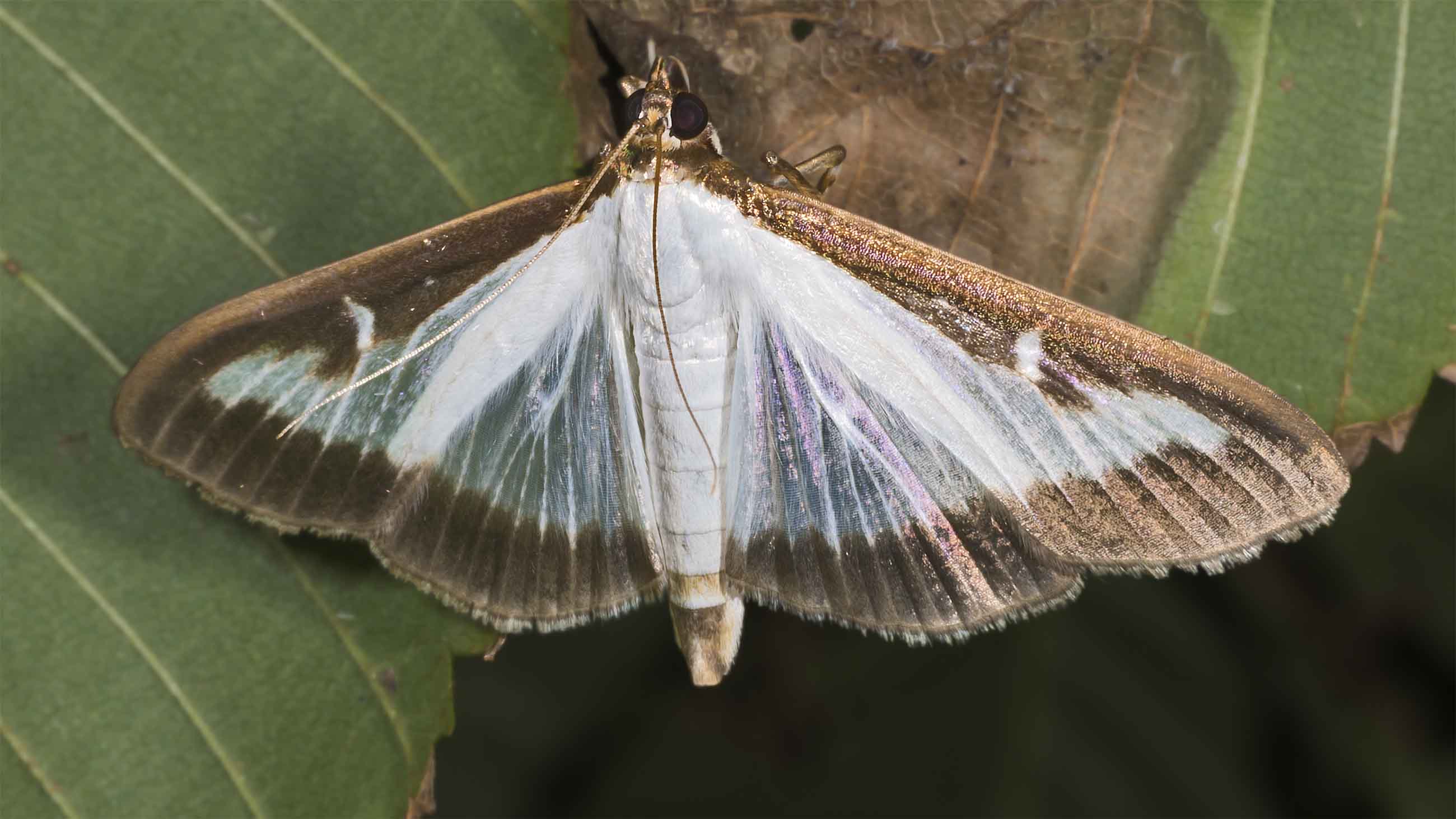Decimated by a Moth, Russia’s Colchic Boxwood Is Now on the Brink
In September 2012, Natalia Shiryaeva was inspecting a temporary nursery set up in southern Sochi, then a vast construction site busy with activity. Her job at that moment, as a biologist at Sochi National Park, was to inspect shipments of plants imported from abroad to decorate what would become, in less than two years, the Olympic Village for the 2014 Winter Olympic Games. It was an opportunity for Russia to showcase the Black Sea city and its surroundings to tens of thousands of international tourists, athletes, and visiting dignitaries, and Shiryaeva was among thousands of Russians — construction workers, architects, landscape designers, and even scientists — drafted for the effort.
To many Russian observers, however, there were early signs that all was not right. By that fall, criminal probes had already been launched into the theft of funds that had been allocated for the vast Sochi project. Allegations of overspending were also mounting, deadlines were slipping, and human rights activists were accusing Russian companies of denying construction workers their wages.
For all the discord around her, it was a single, spherical, decorative topiary that really caught Shiryaeva’s attention that September. The shrub — a box species popular in European gardens and imported from Italy to adorn the developing Olympic site — looked to Shiryaeva as though something had gnawed on its leaves and small branches. She suspected an insect invader, and an internet search quickly pointed to the culprit: the box tree moth caterpillar.
Scientists in the region are trying to save the box tree, but it is an uphill battle.
Shiryaeva ordered the damaged plant destroyed, but it was too late. Having survived the long journey from Italy aboard the full shipment of shrubs, the moth caterpillars had been unwittingly unloaded into Sochi — Russia’s popular southern resort town surrounded by lush vegetation on three sides and cradled by the Black Sea. By the time Shiryaeva came across the damaged plant, the insect was well on its way to invading the surrounding landscape.
It would go on to have an unprecedented feast in this subtropical heaven over the next few years. Unchecked by predators, pesticides, or even a government-imposed quarantine — and perhaps enabled by the Russian government’s flat-footed response to the invasion — the caterpillars have now completely devoured one of the region’s signature plants, a rare species endemic to the area since before the Ice Age called the Colchic boxwood. Since 2012, the pests, which feed on the leaves and bark of boxwoods as they mature from larval caterpillars into moths, have defoliated thousands of acres of these relict trees, from Russia down to Abkhazia and Georgia. A single caterpillar can eat dozens of leaves during its development, with hundreds of caterpillars sometimes feeding on single bushes.
Ecologists and conservationists everywhere will recognize the decimation of the Colchic boxwood as a familiar lesson in the dualities of globalized life, where ease of transport and trade brings both economic benefits and sometimes calamitous side-effects — particularly where oversight is lax and invasive species are permitted to flourish. Russia’s reluctance to deploy insecticides in response to the moth’s rapid proliferation is also a study in the tension between well-meaning environmental restrictions and the imperatives of unforeseen threats on the ground.
As it stands, the plant is likely to disappear from Russia at the end of this year if the government does not intervene, according to a May report by the Center of Forest Health, an institution of the country’s forestry agency. Some researchers have begun taking matters into their own hands, creating sanctuary plots of the struggling species, or freezing seeds in the hopes that some moth-free future awaits.
For now, though, the tree’s survival is uncertain, and in Georgia, where the plant is considered sacred, the boxwood’s plight has been greeted with shock. “When I saw the first photo of the damage, it was as if I was looking at a cemetery,” deputy head of Georgia’s forestry agency Natia Iordanishvili told me. The disaster led the Ministry of Environment and Natural Resources Protection and the Georgian Orthodox Church to discourage cutting of box branches for Palm Sunday, a centuries-old tradition, instead calling on parishioners to plant the rare species and bring the pots to church for a blessing.

The Colchic boxwood takes its name from Colchis, the ancient kingdom on the Black Sea best known for its cameo in Greek mythology: It was where the Argonauts ventured on the quest for the Golden Fleece. Today, the coastal crescent spreading south from Sochi to northeastern Turkey is rich in endemic species, due to its ancient function as a refugium — a climate shelter during the ice age that allowed some heat-loving flora and fauna to survive to present day, contributing to the area’s rich biodiversity. The total area of endemic boxwood’s habitat, where it can grow underneath the canopy of beech, hornbeam and other tall hardwoods, is believed to be between seven and eight thousand square miles.
Russia’s Caucasus Nature Reserve is part of a UNESCO World Heritage Site. Both the reserve and Sochi National Park are subject to strict government regulations designed to protect the area’s natural splendor. When the box tree moth began to spread through the forests, however, these environmental protections wound up hampering efforts to save the affected trees; Russian law bans even mild insecticides in protected territories. Shiryaeva’s desk at the headquarters of Sochi National Park is covered in correspondence with the Russian environment ministry, but her efforts to contest the ban on biological agents have been fruitless. “Is that not absurd?” she says. “It means that it’s better that a relict, unique species that grows only in the Caucasus would die — better that the patient dies, than to give him this medicine.”
Powerless against using the most obvious weapon against the invasive insect, Russian scientists turned to exotic ones. They released thousands of small wasps native to China hoping they would kill the box tree moth caterpillars, but the moth population only continued to grow. They experimented with another type of wasp, but it preyed only on other insects, avoiding the caterpillars, which absorb toxins from the box tree leaves. According to Shiryaeva, they found a parasitic fungus that killed 90 percent of box tree moth caterpillars in the lab, but Sochi’s torrential rains washed away the fungus solution once it was applied in the forests, preventing it from taking effect.
Nothing worked.

As a result, in just two years, 99.9 percent of the box tree forests in Abkhazia, Georgia’s breakaway republic bordering Sochi, were eaten by the moth, says Roman Dbar, who heads the Institute of Ecology of the Academy of Sciences there in the city of Sukhumi, and who has become a point person on the forest catastrophe. Originally from Asia, the box tree moth has successfully conquered the entire European continent, with plant lovers from the Spanish Pyrenees to Western England saying goodbye to box hedges, a quintessential element of any respectable garden. The situation in the Caucasus, however, is more tragic: Not only has the moth hit endemic Colchic box forests in tough-to-reach mountain areas, its spread has been more rapid and destructive here.
In Sochi’s warmth and humidity, the moth can reproduce up to four times a year, with each female laying over 200 tiny translucent eggs. The offspring of just one of the insects can completely defoliate a fully-grown box tree bush, lab results have shown. Without leaves, the tree may for survive for at most two years, Dbar says, but its failure to photosynthesize eventually dehydrates it completely. Death is even quicker for trees where the caterpillars have removed the bark as well.
In the Colchic boxwood forests, people reported clouds of white moths so thick it looked like it was snowing in the middle of the summer. In parks, tourists were provided with sticks for moving aside caterpillar webs as they walked along the trails, but the presence of the insects is devastating. In one protected area in Russia’s Adygea region, I stood on a hill that used to be a boxwood forest, whose dense canopy of leaves blocked out the sunlight and kept the area shrouded in mist. Today the forest is little more than a barren wasteland covered in dry brushwood.
As the plant disappears, other species of worms, scorpions, and lichens that relied for millions of years on the humidity and shade it provided will likely also disappear, scientists say, and the full scope of the consequences is still unknown.
The Russian government recognizes the importation of contaminated plants as the reason why a rare species has nearly gone extinct in Russia. When at a recent event I asked the Russian environment minister, Sergei Donskoi, who is to blame for the plant’s demise, he declared that he is “not an investigator.” Then he added that the pest was mistakenly brought into the country and spread.
But scientists argue that the government should have put up a fight instead of sitting back as the disaster hit. The ban on insecticides should have been tweaked to allow Sochi National Park to carry out its obligation to protect rare species, Shiryaeva says. “These laws were written ages ago, but our world is changing, and the laws should reflect real life.” Globalization creates more risks, as Russians bring exotic plants back from their travels and plant them in their gardens, where once they were perfectly content with simple apple trees and currant bushes.
For now, Russia has few, if any, protocols at the border for testing plants and other goods for pests and pathogens, Shiryaeva says. “They have to have specialists sitting there who would know the invaders in the face — similar to how they look for terrorists.”

Even in the face of almost complete devastation, there is a chance to save the Colchic boxwood from extinction. One Russian scientist, Alexey Bibin, a senior researcher at the Caucasus Nature Reserve, selected a small plot on a piece of flat ground for an experimental project to create a sanctuary for wild-growing Colchic box trees. Sporadic surviving trees — all around 100-years-old and just over the average human height — are sprayed regularly with a mild biological insecticide, in a rare experimental easing of the Russian ban. Bibin and colleagues have also planted additional saplings on the forest plot, and they visit several times a month to check on them.
“This is the only reserve of the genetically pure Colchic population in Russia from which we could take seeds and grafts, to restore it in its habitat,” Bibin says, adding that the project was a last resort, after years of government meetings, roundtables, and conferences about the box tree crisis. “It became clear that Russia is not planning to do anything, despite it being a federally-protected plant,” he says. “If I go and cut down a box tree shrub, I’ll be fined 25,000 rubles (about $420), but when the entire species is dying at the fault of the government — they have disregarded this since the government cannot fine itself.”
It could be decades or even centuries before the box tree, an extremely slow-growing plant, has any chance to be restored in the wild, but scientists like Bibin say seed banks and surviving fragments of the forests are at this point the only way to ensure the plant’s genes don’t disappear from nature completely.
To that end, Dbar’s institute in Abkhazia has recently outfitted a new lab to deep-freeze box tree seeds over the next decade while waiting for the invasion to pass, or possibly for natural predators to emerge that would keep the caterpillars in check. With Dbar’s help, a grove of tall, mature box trees was saved in the mountains, where a local café took it upon itself to consistently treat the trees with insecticide.
Today tourists flock to the grove, savoring its cool emerald shade and the aromatic scent of its leaves. It is probably the last remaining piece of truly ancient boxwood forest in the Caucasus, Dbar says, and the seeds could be harvested there, though lack of synergy between governments in the region means scientists will probably not be able to exchange seeds and saplings for greater effect.
Meanwhile, the moth’s invasion, rapid breeding, and complete destruction of a singular plant species, should be studied as a lesson for the future, he adds.
“The world is rational, and the box tree doesn’t seem like it’s important for the survival of humans,” he says, explaining why authorities have not seriously considered tackling the problem. But its evisceration could be viewed as a model for other, more serious threats, he says, calling this type of catastrophe unprecedented in modern history.
“Humans themselves are rather vulnerable. They can attract a newly-formed or relict type of parasite, virus, or bacterium,” he says. “It’s a model of a kind of Plague of Egypt — which can happen anywhere, and would be hard to predict.”
Maria Antonova is a Moscow-based reporter for Agence France-Presse. Her work has also appeared in The New York Times, National Geographic, and Foreign Policy magazine, among other publications.
This story was produced with partial support from the Earth Journalism Network











Comments are automatically closed one year after article publication. Archived comments are below.
The National Forest Service in the USA used Bacillus Thuringiensis var. Kurstaki (B.t.) to great effect against Gypsy Moth caterpillars.
https://www.fs.fed.us/foresthealth/technology/pdfs/btmanage.pdf